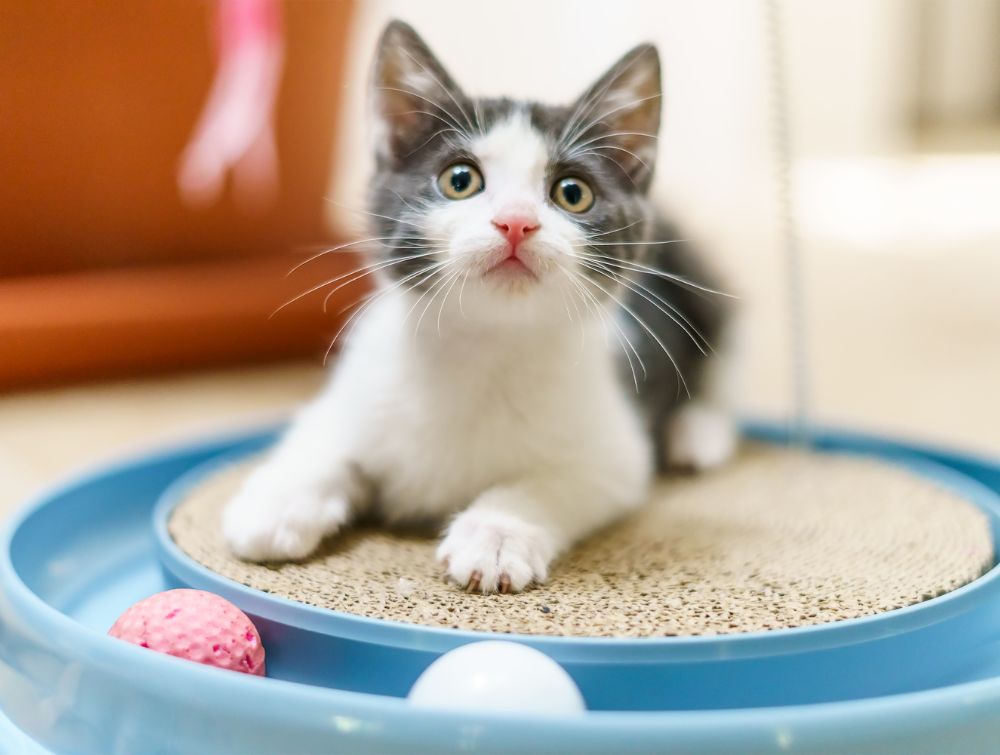KITTY NOT PURRING ?? … GET A CHECK-UP !!

Each is a “paws-up” to see your veterinarian:
- Changes in Interaction: A previously clingy cat acting uncharacteristically aloof, or a more independent cat that suddenly transforms into “Velcro kitty” are examples.
- Changes in Activity: A decrease or increase in activity and/or a change in the cat’s daily routine can be a sign of a medical condition. For instance, arthritis is far more common in cats than previously thought.
- Changes in Chewing or Eating Habits: Contrary to popular belief, most cats are not finicky eaters. Look for changes such as a decrease or increase in how much the cat eats. Eating less can be a sign of several disorders, ranging from dental problems to cancer. Increased eating can be caused by diabetes, hyperthyroidism or other health problems.
- Changes in Water Intake: Drinking more or less water can be an indicator of a health problem, such as diabetes or kidney disease.
- Unexpected Weight Loss or Weight Gain: Weight doesn’t always go up or down with a change in appetite. Cats with diabetes or hyperthyroidism, for example, may lose weight even if they eat more.
- Bad Breath: If those pearly whites don’t smell sweet as a daisy, there may be a dental and/or gum issue. Bad breath may also be related to a digestive disorder, infection or kidney disease.
- Changes in Grooming Habits: Fastidious groomers letting themselves go — even just a little bit — might be ill. Over-grooming may be related to stress, pain or skin conditions.
- Changes in Sleeping Habits: From catnapping more often to awaking in the middle of the night, the explanation may be illness, perhaps associated with aging.
- Changes in Vocalization: Wallflowers that begin to vocalize or cats that howl in the night may be doing so as a result of a medical problem. Feline cognitive dysfunction (feline Alzheimer’s), hyperthyroidism, high blood pressure or anxiety are among the possible explanations.
- Signs of Stress: Cats dislike change more than anything. Changes in your family’s schedule, new pets coming or going, or even rearranging the furniture can cause stress. A cat that isn’t feeling well may be anxious as a result. Geriatric cats may be particularly prone to stress. Anxious cats may exhibit behavioral changes (such as missing the litter box) and physical changes. Anxiety requires the same professional attention as diabetes or a heart condition.
By the way, because illness is so commonly associated with changes in a cat’s activities of daily living, it’s a good idea to create a “healthy profile” for your cat. That way, you and your veterinarian will know what is normal for your cat so that in the future, it will be much easier to notice when something out of the ordinary happens.
